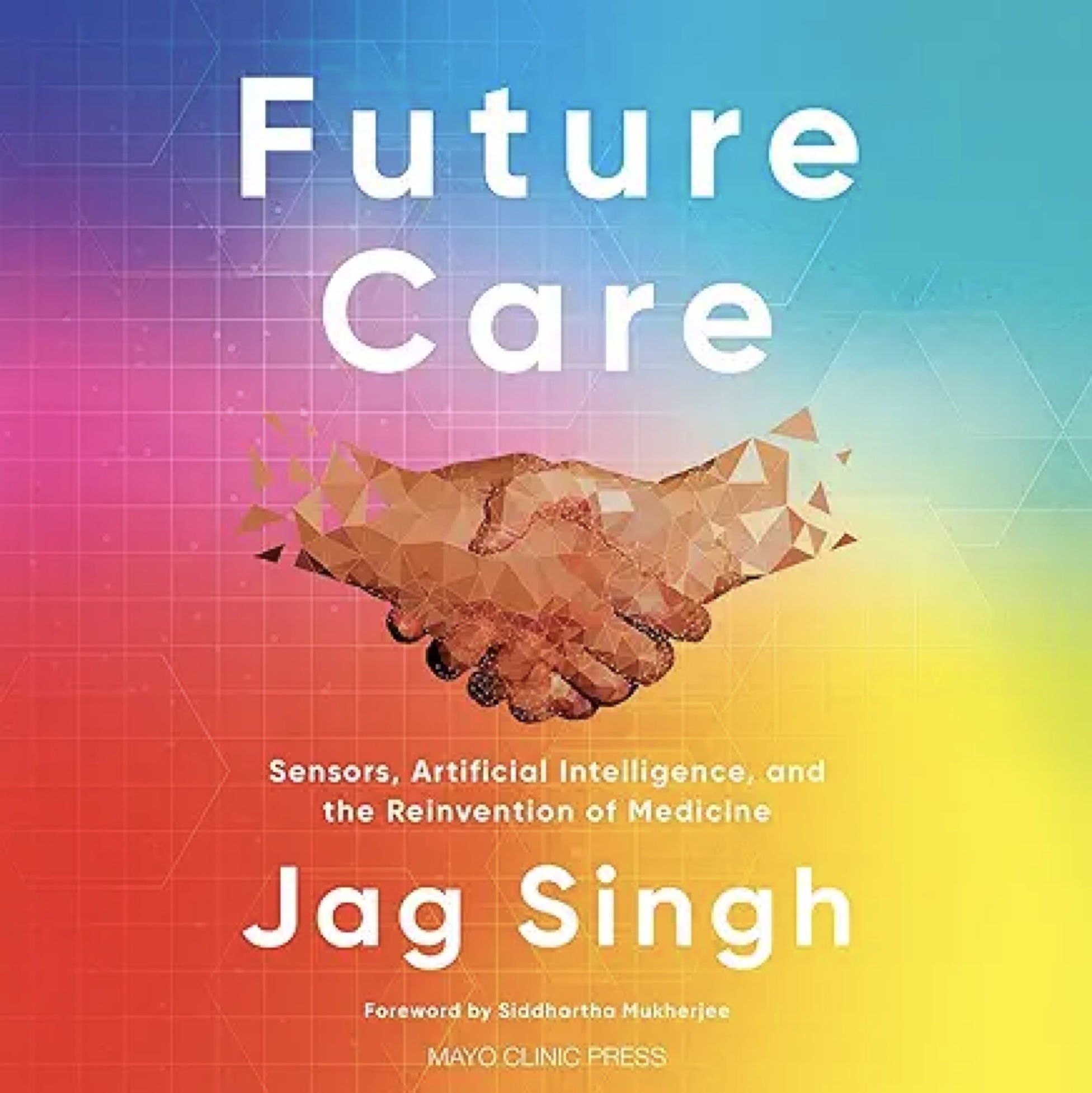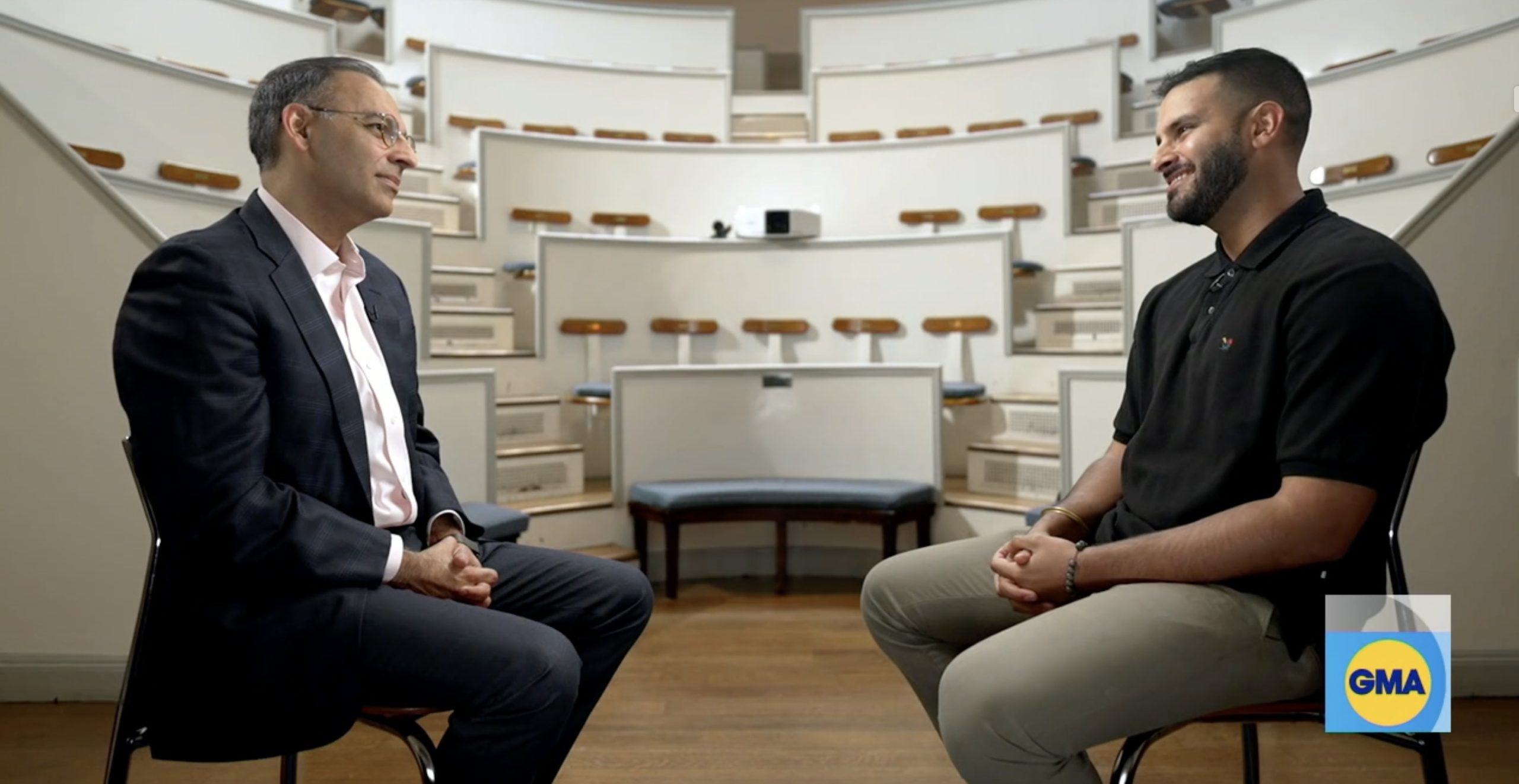
Future Care: Sensors, Artificial Intelligence, and the Reinvention of Medicine by Jag Singh takes a look at the current status of sensors and electronic medical records and shows us the future of health care where the focus is on staying healthy rather than treating disease. There are some barriers to a future that features continuous monitoring and treatment of our entire body by unobtrusive wearables and Jag lets us know what they are. If you have a body that you want to keep healthy, this book is for you.

You can start with his interview by his son on Good Morning America. The future of medicine and health care in a post-pandemic world
Introduction
- Jag tells of his experience being hospitalized with a serious case of COVID-19. Here he saw first hand the trend toward more virtual care even in the hospital and more so once he was sent home. The future of health care is virtual. It was already on the way, but the pandemic jump started the trend. There is more focus on wellness and prevention as well with a shift in hospital care to the home.
- Compared to other developed countries, healthcare in the US features lower quality and less cost-effective care. Cost for drugs, devices, and procedures are mush higher and people are less satisfied. At $4 trillion a year, health care accounts for one fifth the US GDP. The conversation is around data, wearables, sensors, and AI. As the number of older people grows we are looking at a tsunami of sicker and older patients.
Part I: Sensors
1. Making Sense of Sensors
- Our body has sensors for every sense and virtually every cell. We also have many digital sensors that can be worn or implanted. The goal is to use such sensors to self-monitor and self-correct our bodies from disease states and to avoid invasive procedures provided by surgeons. As sensors advance, they can provide continuous information and take action as needed. This is important as necessary medical interventions do not line up with trips to the doctor.
2. Doc-In-The-Box
- Modern smartphones have joined a host of wearable sensors that continuously gather data and transmit it for analysis and informing the owner. They already make for excellent heart monitors. The competition in this market is pushing innovation at a rapid pace.
- While implants are part of this market, the developmental emphasis is on non-invasive devices. These devices don’t lie, unlike patients, and are far superior to patient memory. Other key issues are the integration of these devices into the larger health care picture and the affordability that can take them beyond the well off early adopters.
3. The Failing Heart, The Dying Patient
- Heart failure affects more than 6.5 million Americans at a cost of $40 billion a year and growing. Many only see a doctor after they go to the emergency room due to a significant cardiac event and most never bounce back to where they were before the event. Virtual sensor care offers hope and some of the technology is already here in the form of implantable pace makers and defibrillators.
- A common cause of setbacks is failure to adhere to medicines and procrastination. To prevent the time lag between a sensed event and treatment, some devices can alter medication doses in real time. This is already possible for insulin, blood pressure, and pulmonary artery pressure. Some sensors can report problems to patients who can then take action as long as they are properly educated. This kind of care is totally personalized and can dramatically lower hospital admissions and damage to the heart.
4. The Smartwatch Era
- Each year, more of us are wearing devices such at Apple Watches and Fitbits that can continuously monitor many bodily functions. Both have already been part of large clinical tests. While they pick up a lot of symptoms, their primary short coming seems to be too many false positives. If they were used to alert doctors these false positives would be enough to overwhelm our medical system.
- Since everyone expects such wearables and the algorithms that analyze the data they generate to improve, it’s a matter of time until they are integrated into personal care. They have already saved lives by calling emergency help after detecting falls. They can also monitor sleep quality. Continuous reporting to a health care system can make for privacy issues and there is also the matter of equity as many people can’t afford them.
5. Continuous Care and Novel Sensors: A Recipe for Health
- Many sensors that continuously monitor our body’s fluids and rhythms are already available. Most report directly to smartphone apps but have yet to be integrated with our electronic medical records (EMRs). Common diseases that are already being continuously monitored include asthma, diabetes, a-fib, and diseases where electrolyte balance is an issue. With non stop feedback patients can take charge of their health. Sensors that prevent trips to the doctor can disrupt the health care system’s revenue stream.
DrDougGreen.com If you like the summary, buy the book





